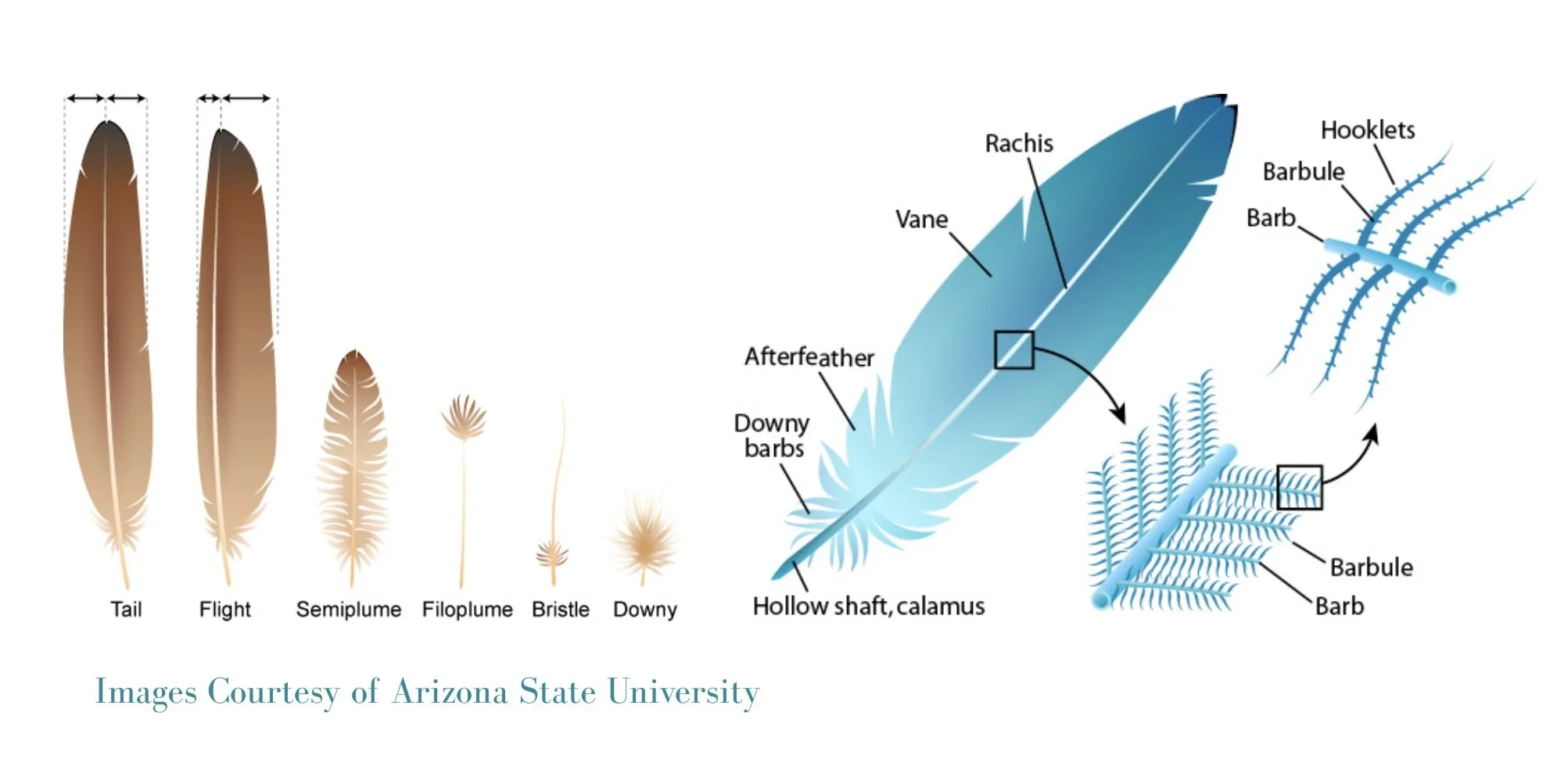Miraculous Magical: On Feathers
Welcome to the first installment of the miraculous+magical blog series, which aims to bring the energy of praise, appreciation, charms and lore into daily life in our modern world.
On Feathers
What is more miraculous+magical than a feather?
Each feather with its delicate individual fronds; the clustering of feathers that forms a wing. And a tail. Then suddenly – lift off!
My daughter found a feather recently. Brown with cream stripes, the length of her forearm. My initial concern was that she not chew on this feather lest she acquire some hitherto unencountered strain of avian flu. My over-reaction to the germ threat by feathers did not dampen her wonder. Thank god for children, who focus our attention on the wonders of the natural world and not the perils it may pose.
I tucked away the feather for safekeeping. To keep her safe from the germs envisioned by my alarmist brand of anxiety. To keep it safe for future admiration and appreciation.
In a desire to learn more about feathers, I googled Anatomy of a Feather, and found the beautiful images below, which are created by Arizona State University, Ask a Biologist). I suspect, based on its size, that the specimen discovered by my daughter is a tail or flight feather.
Then a few hours later, while we were driving in the car, I spied a small, delicate downy feather on the dashboard. Once you start to think about feathers, you will notice more feathers. You could say I’ve had feathers on the mind. But don’t call me feather-brained! Or maybe do… maybe we need to revise the initial meaning of that insult, implying a mind that may as well be filled with fluff and thus is incapable of substantive thought. Maybe feather-brained indicates a mind capable of flights of fancy and imagination, a mind that can reach heights and take a broad view on a situation.
Addendum: On Quills
In addition to pondering the marvels of flight, my daughter intuitively held the feather like a pen, seeing how its shape lends itself to writing.
I was delighted to confirm her instincts – our ancestors had indeed used feathers as quills for writing. But also realized I knew nothing about how our forebearers transformed found or harvested feathers into writing implements.
I was delighted to find a three-part blog series by Katie Hartman at the University of Illinois about how quills were made, specifically during the medieval period (here is part I in the blog series).
Ms. Hartman shares “the first five flight feathers, or primaries” from larger birds like geese and swans were optimal for creating quills. The process to transform a feather into a quill first involves extensive drying. Next, some elements of the feather (excess barbs, membranes, etc.) are removed to enable its utility for writing. And the tip of the feather is cut in a specific manner allowing it to hold ink and scrawl on a page.
If anyone is attempting this at home, another cool blog on the topic by Carly Drew can be found here.
Postscript 1: To my fellow germaphobes/feather enthusiasts, here is a helpful guide for feather cleaning and care.
Postscript 2: Thank you to the gatherers and sharers of knowledge. This blog post would not have been possible without the work of scholars of bird biology and rare books & manuscripts.





